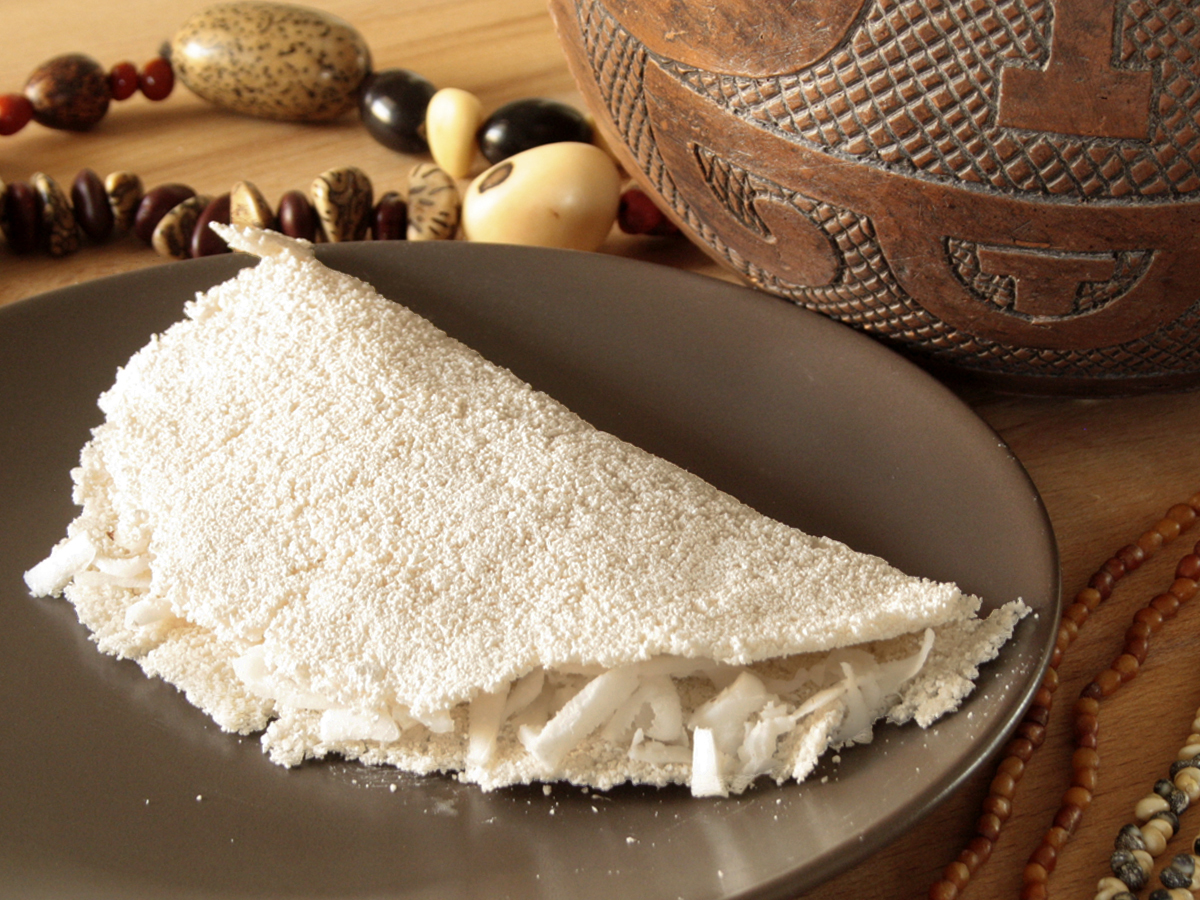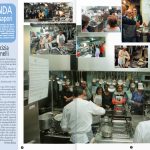The tapioca crepe, known as “beiju de tapioca”, “beiju mole”, “tapioca” or “tapioquinha”, is a genuinely Brazilian recipe, inherited from the indigenous culinary culture. The first news about “tapioca com coco” (tapioca crepe stuffed with grated coconut), served during meals instead of bread, dates back to 1618, in the “Diálogos das Grandezas do Brasil” by Ambrósio Fernandes Brandão.
The tapioca crepe is a lightly salted tapioca flour hydrated disk cooked, stuffed and folded in half. It is so versatile: you can enjoy them at any time of the day and can be used for sweet or savoury dishes. The most popular types of stuffing are freshly grated coconut, butter, “queijo de coalho” “goiabada com queijo” (Juliet and Romeo), coconut and sweetened condensed milk, jerky, chicken, among others. It is very common in Brazil’s North and North-Eastern region and in the beaches in Rio de Janeiro.
The “tapioqueiras” (tapioca crepes cooks) are a significant part of the local food economy in Olinda, and the “tapioca crepes” places are known as “tapiocarias”.
“Tapioca crepes” hold the title of “Intangible Cultural Heritage of the City” granted by the “Heritage Council for Historic Sites” (Plano Municipal de Cultura, Prefeitura de Olinda) in 2006.
Ingredients
• tapioca flour hydrated (“Massa pronta para tapioca”)
• freshly grated coconut or your favourite stuffing
Preparation method
- Heat a nonstick pan without greasing.
- Turn on low heat and spread a thin layer of tapioca flour hydrated into a frying pan or pass the fresh or wet cassava starch through a large sieve straight into the frying pan.
- Wait until the starch granules will stick together forming a flexible disk. When edges will begin to pull away from the sides of the pan turn the crepe over and cook the other side. The cooking time is so short. The crepe should be white and flexible.
- Garnish as desired, fold in half and serve immediately.
Posted on: 20 March 2014













 I’m an architect. I was born in Brazil and my father was Italian.
I’m an architect. I was born in Brazil and my father was Italian.